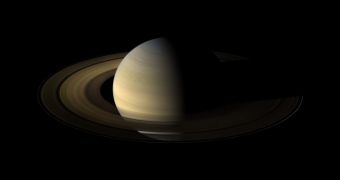Saturn has been around the solar system for a while. But, of all the equinoxes it had since its formation, it was only this one that was observed directly with a probe right on the spot, the Cassini spacecraft. It revealed new and stunning images, which show new, previously unidentified quirks in the gas giant's rings, as well as shadows that were not observed until now. According to preliminary analyses of the photos the probe beamed back, Saturn's rings are not completely flat, as thought, but have bumps that are as high as the Rocky Mountains.
Naturally, when compared to such a large planet and ring system, features that are only a few miles in height are not very impressive. However, they knocked off the theory holding that the formations were completely flat. “It's like putting on 3-D glasses and seeing the third dimension for the first time. This is among the most important events Cassini has shown us,” NASA Jet Propulsion Laboratory (JPL) Cassini project scientist Bob Pappalardo, from Pasadena, California, says of the finds. The equinox took place on August 11th. Two equinoxes take place during every Saturnine orbit around the Sun, which takes about 29.7 Earth years.
“The biggest surprise was to see so many places of vertical relief above and below the otherwise paper-thin rings. To understand what we are seeing will take more time, but the images and data will help develop a more complete understanding of how old the rings might be and how they are evolving,” JPL deputy project scientist Linda Spilker adds. The new images that Cassini caught were taken in white glare from the low-angle lighting, and finally allow researchers to measure the height and breadth of the formations that appear in the rings, which have thus far eluded studies.
“We thought the plane of the rings was no taller than two stories of a modern-day building and instead we've come across walls more than 2 miles [3 kilometers] high. Isn't that the most outrageous thing you could imagine? It truly is like something out of science fiction,” Boulder, Colorado-based Space Science Institute Cassini imaging team leader Carolyn Porco adds. The moon Daphnis, for example, at one point causes such a gravitational pull, that it forms a wall about four kilometers (2.5 miles) high.
The Cassini-Huygens mission is a cooperative project of NASA and the European and Italian Space Agencies. JPL manages the mission for the Science Mission Directorate at the NASA Headquarters, in Washington, DC. JPL also designed, developed and assembled the Cassini orbiter and its two onboard cameras. The imaging team is based at the Space Science Institute. The Composite Infrared Spectrometer team is based at the American space agency's Goddard Space Flight Center, in Greenbelt, Maryland.

 14 DAY TRIAL //
14 DAY TRIAL //